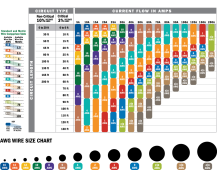JohnnyBravo
Angler
Hello guys,
I have DOKIO suitcase /folding 100W (2x50W) panel that I want to use to charge my Ecoflow Delta 1300.
I would like to move the panel around my house while keeping the Ecoflow inside therefore I am looking for longer cables.
Now the questions:
1. why should I use solar cables? how long regular electrical cable would last for my application?
2. can I extend solar cables just by using WAGO connector, XT60, or even twisting them together with or without soldering? Why should I use MC4?
3. assuming I'll go in the future for 400W panels array (2x200W or 4x100W), as long the cables connecting panels will stay behind the panels (so no sun exposure), do I really need MC4 connection?
4. the wire size for such 400W array would require to be the same between the panels as the one connecting to the PWM/MPPT?
thank you
I have DOKIO suitcase /folding 100W (2x50W) panel that I want to use to charge my Ecoflow Delta 1300.
I would like to move the panel around my house while keeping the Ecoflow inside therefore I am looking for longer cables.
Now the questions:
1. why should I use solar cables? how long regular electrical cable would last for my application?
2. can I extend solar cables just by using WAGO connector, XT60, or even twisting them together with or without soldering? Why should I use MC4?
3. assuming I'll go in the future for 400W panels array (2x200W or 4x100W), as long the cables connecting panels will stay behind the panels (so no sun exposure), do I really need MC4 connection?
4. the wire size for such 400W array would require to be the same between the panels as the one connecting to the PWM/MPPT?
thank you




